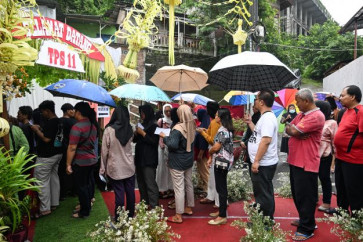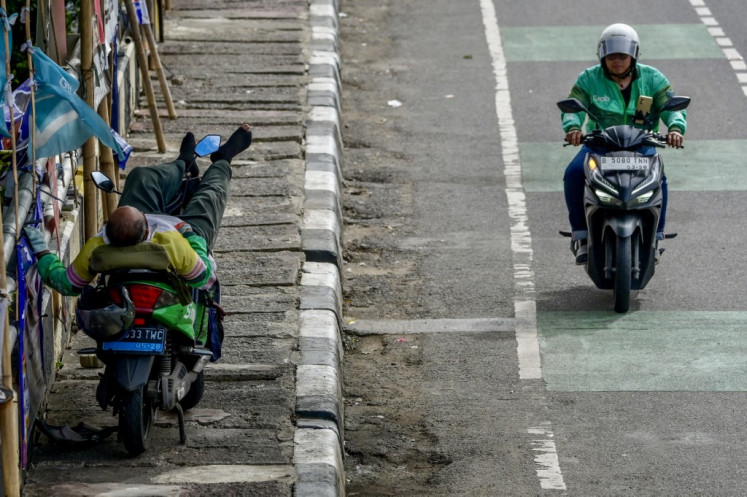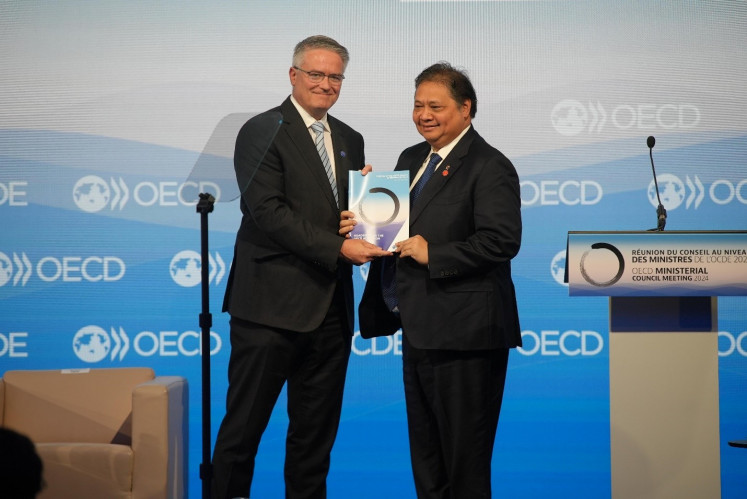Happy Year of the Dragon, a year of courage, prosperity
The Lunar New Year falls on Jan
Change Size

T
he Lunar New Year falls on Jan. 23, 2012, marking the start of the Year of the Dragon — a year of courage, prosperity, love and cooperation. With such a rosy expectations, the end of the world is likely not going to occur this year.
The current economic downturn may ease up a bit as well. People of Chinese heritage worldwide are likely going to celebrate this special day merrily and for a total of 15 days.
We can expect to hear loud firecrackers, see a lot of bright red clothes, watch the famous dragon dance and eat the delicious Nian Gao rice cake and roast pork. Children expect you to give out ang pao or “red envelopes,” so make sure your pocket is full of them. Chinese New Year, or Imlek, is a joyous occasion and gives us hope for a better tomorrow.
Let’s extend a sincere Happy New Year to each other by saying, “Xin Nian Kuai Le.”
Residing an hour’s drive from San Francisco, most likely I’ll be celebrating in this foggy city’s famous Chinatown. San Francisco’s Chinatown boasts the largest Chinese New Year celebration outside of Asia, which will take place on Feb. 11.
The 2012 Miss Chinatown USA, who will be crowned on Feb. 4, is likely symbolizing the hostess of the festival. A 76-meter long golden dragon, the center of the occasion, will dance the night away with 100 acrobatic martial artists.
San Francisco’s Chinatown was established in 1848 and is both the oldest Chinatown in the United States and the largest Chinese community outside Asia. It is famous for its unique ambiance, which seems more like Hong Kong than an American city.
Chinatown boasts over 300 restaurants of various sizes, prices, and specialties, which would take nearly a year to try each one of them. With a total land area of only 3.5 square kilometers, its population of more than 100,000 makes it one of the most densely populated districts in the US.
Every Chinese New Year reminds me that I’m a part of one of the oldest cultures in the world. With 1.4 billion other Chinese individuals worldwide, including 40 million living outside Mainland China, it’s a great feeling realizing how grand the membership is.
The Han Chinese ethnicity is divided into 56 ethnic groups. Indonesia is home to approximately 7 million Han Chinese, with major populations based in other countries such as the US (3.8 million), Singapore (3.6 million) and Malaysia (7.1 million).
In Indonesia, Malaysia, and Singapore, those who have assimilated into the Indonesian and Malay cultures are referred to as peranakan. By this category, I am considered a peranakan as well, even though my grandparents migrated directly from Northern China. I enjoy having spicy and rich peranakan cuisine and often wear my kebaya nyonya, proudly created by my own mother’s fashion designs.
Raised in a middle-class family by a single mother, I never considered myself financially wealthy. My high school and college classmates witnessed how I was used to taking public transportation to go to school, including the notoriously overfilled public buses and trains. However, the stereotype that “all Chinese are wealthy” stays with me to this very day, despite my family’s constant struggle to catch up with daily expenses. Such stereotypes taught me an important life lesson: Many people believe in illusions.
Most overseas Chinese, I believe, carry with them at least a longing to feel at home wherever they are, while at the same time feeling proud of their cultural heritage. For this, they try to find meaning through various allegiances and affiliations. Indian literary critic Gayatri Chakravorty Spivak said it well, “I attempted to fracture the totalizing logic of their representational practices by othering myself from the stereotypical consolidation of the rich, non-resident Indian subject.”
Spivak made a lot of sense because the “stereotypical consolidation of the rich” is merely a mirage, an illusion. Out of 7 million individuals of Chinese ethnicity in Indonesia, how many are “pure” Chinese? Could we even distinguish or identify those individuals?
This would be very hard to prove with DNA evidence, because, after all, ethnicity a politicized idea, an invention to divide a social structure. Furthermore, out of 7 million individuals, how many of them actually possess the economic power to influence a country? All 7 million of them? I doubt it.
Just looking at Forbes magazine’s list of 40 richest individuals in Indonesia doesn’t give a valid picture of Chinese-Indonesians’ wealth. One should also read ethnographic research findings about Chinese-Indonesians trapped in cycles of poverty, such as Vidhyandika Djati Perkasa’s Poverty in a Chinese Community in West Java, Indonesia: Survival, Identity, and Social Face.
As a Chinese-Indonesian in a Western country, I carry with me two beautiful cultures with which I strive for acceptance in whichever community I reside. Despite the stereotypes I had to endure, the New Year always brings new hope and aspirations.
Let’s remind ourselves that our identity isn’t determined by stereotypes, but by the quality of our work and the content of our character.
The writer is an award-winning author and columnist based in Northern California.









